_ScienceWithMe!_® brings you another simple science experiment from our Science With Africa! series.
For our new readers: _ScienceWithMe!_® is trying to spread science and scientific thinking around the globe. To this end, we have sponsored an expat in a rural community in Africa to get African kids doing ScienceWithMe!® We hope you in the Americas, Australia, Europe and Asia follow suit! Enjoy this experiment! And be sure and leave Katy a comment below!
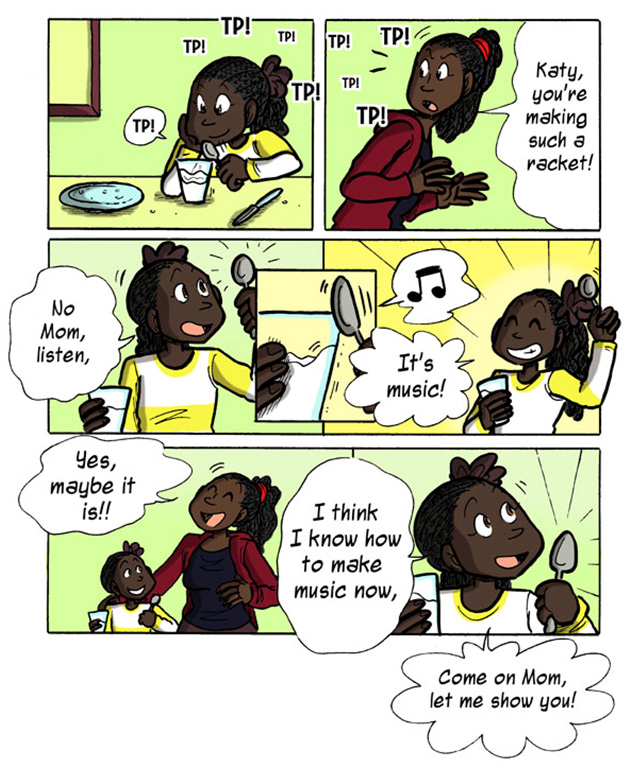
Do you want to make music with Katy and her Mom? Let’s go!!!
Here’s what you need:
- 1. Some glasses with water
- 2. A spoon
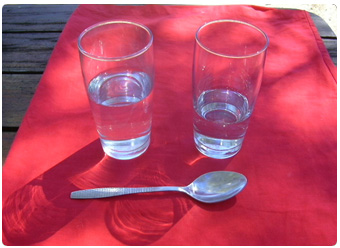
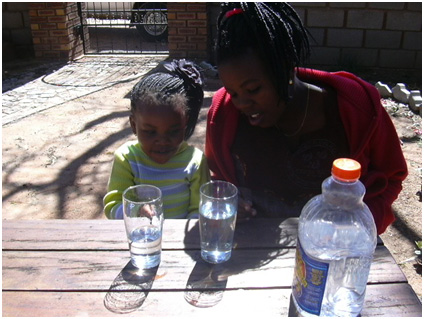 Katy filled each glass with different amounts of water and then hit each with a spoon.
Katy filled each glass with different amounts of water and then hit each with a spoon.
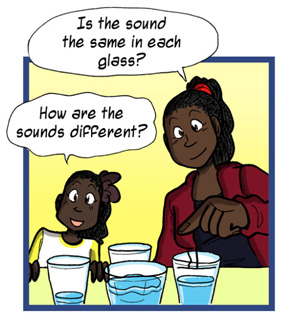
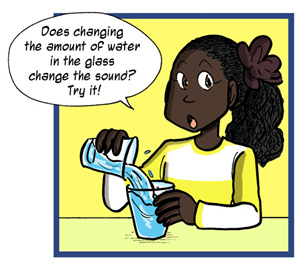 Collect 8 glasses and try to make the notes in the scale - Do Re Mi Fa So La Ti Do- Can you do it!!! Give it a try!!!
Collect 8 glasses and try to make the notes in the scale - Do Re Mi Fa So La Ti Do- Can you do it!!! Give it a try!!!
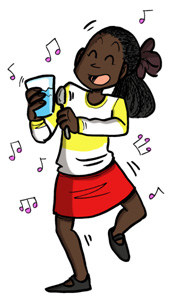 Katy had fun making music with her glasses- did you?
Katy had fun making music with her glasses- did you?
 “I’m off to make more music- SEE YOU NEXT TIME!!!” Parent’s corner: Sound is created by vibrations. You could demonstrate this to your child by having him or her hold lightly on their throat and have them hum. They can feel the vocal chords in their throats vibrating. In this experiment we are actually looking at the vibrating of the glass. When you hit the side of the glass with the spoon the glass vibrates. When you add water to the glass the water acts as a dampener. It causes the vibrations to slow down. When things vibrate fast they produce a sound at a higher pitch, when they vibrate slower they will produce a sound with a lower pitch. With our musical water glasses, when there is more water in the glass, the pitch of the sound produced is lower because the water has caused the glass to vibrate slower. When there is a smaller amount of water in the glass the pitch is higher because the glass is vibrating faster.
“I’m off to make more music- SEE YOU NEXT TIME!!!” Parent’s corner: Sound is created by vibrations. You could demonstrate this to your child by having him or her hold lightly on their throat and have them hum. They can feel the vocal chords in their throats vibrating. In this experiment we are actually looking at the vibrating of the glass. When you hit the side of the glass with the spoon the glass vibrates. When you add water to the glass the water acts as a dampener. It causes the vibrations to slow down. When things vibrate fast they produce a sound at a higher pitch, when they vibrate slower they will produce a sound with a lower pitch. With our musical water glasses, when there is more water in the glass, the pitch of the sound produced is lower because the water has caused the glass to vibrate slower. When there is a smaller amount of water in the glass the pitch is higher because the glass is vibrating faster.
